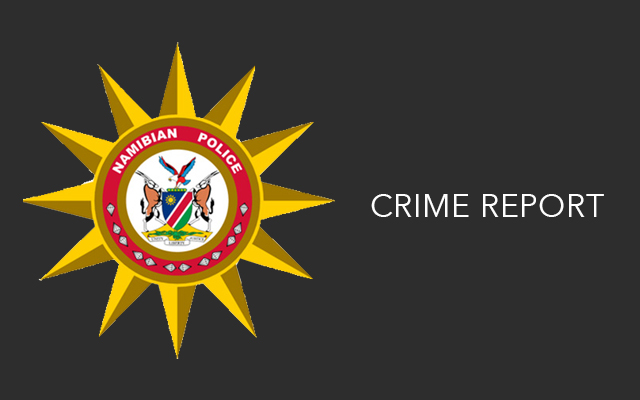Omanyano ovanhu koikundaneki yomalungula kashili paveta, Commisiner Sakaria takunghilile
Veronika Haulenga
Omanyano ovanhu koikundaneki yomalungula kashili paveta, Commisiner Sakaria takunghilile
Veronika Haulenga
Listeners:
Top listeners:
-
play_arrow
Omanyano ovanhu koikundaneki yomalungula kashili paveta, Commisiner Sakaria takunghilile Veronika Haulenga


By Horst Simon, Business Risk Officer, Capricorn Group
Sub-Saharan Africa, home to diverse cultures, abundant resources, and dynamic economies, is a region of immense potential. However, amidst its promise lies a landscape fraught with risks that demand attention and initiative-taking strategies. From political instability and security threats to environmental vulnerabilities and health crises, Sub-Saharan Africa grapples with multifaceted challenges that require concerted efforts from governments, businesses, and civil society. Let us look at the most important ones:
Political Instability and Governance Challenges:
Political instability remains a significant concern across many countries in Sub-Saharan Africa. Issues such as contested elections, constitutional crises, and governance failures often contribute to social unrest and economic disruptions. Persistent corruption and weak institutions further exacerbate these challenges, undermining trust in government and impeding development efforts. Addressing political instability requires bolstering democratic processes, strengthening institutions, and promoting transparency and accountability in governance.
Security Threats and Conflict:
The region grapples with various security threats ranging from armed conflict and terrorism to transnational crime and insurgency. Various Countries face ongoing violence, displacement, and humanitarian crises. Instability in the Sahel region has also heightened concerns about regional security and stability. Efforts to address these challenges necessitate robust peacebuilding initiatives, regional cooperation, and investments in conflict prevention and resolution mechanisms.
Economic Vulnerabilities and Inequality:
Despite significant economic growth in recent years, Sub-Saharan Africa continues to face economic vulnerabilities, exacerbated by factors such as overreliance on commodity exports, fluctuating global prices, exchange rates, and inadequate infrastructure. Persistent poverty and income inequality remain pervasive, posing risks to social cohesion and economic stability. To mitigate these vulnerabilities, there is a need for diversified economies, investments in infrastructure and human capital, and inclusive growth policies that prioritize poverty reduction and job creation.
Environmental Risks and Climate Change:
The region is highly vulnerable to environmental risks, including climate change, deforestation, land degradation, and water scarcity. Climate-related events such as droughts, floods, and cyclones have devastating impacts on agriculture, food security, and livelihoods, exacerbating poverty and displacement. Adapting to climate change and building resilience requires concerted efforts to promote sustainable land management, renewable energy adoption, and climate-smart agriculture practices.
Health Crises and Pandemic Preparedness:
The COVID-19 pandemic underscored the fragility of healthcare systems in Sub-Saharan Africa and highlighted the need for enhanced pandemic preparedness and response capabilities. Limited access to healthcare services, inadequate infrastructure, and resource constraints poses significant challenges in managing health crises effectively. Strengthening healthcare systems, expanding access to essential services, and investing in research and development are critical for mitigating health risks and ensuring resilience in the face of future pandemics.
Navigating these risks in Sub-Saharan Africa requires a multifaceted approach that addresses political, economic, social, environmental, and health challenges. Building resilience and mitigating risks necessitate strong governance, regional cooperation, investments in infrastructure and human capital, and sustainable development strategies.
Whilst the road ahead may be fraught with challenges, concerted efforts by governments, businesses, and civil society can unlock the region’s vast potential and pave the way for a more prosperous and sustainable future. Let us look at an “Action Plan “for the effective management of risk in Sub-Saharan Africa:
1. Strengthen Corporate Governance and Institutions:
- Implement anti-corruption measures and promote transparency and accountability in governance.
- Strengthen democratic institutions and ensure the effective rule of law.
- Provide capacity-building support to government agencies and civil society organizations.
Build on the success story of Botswana, which has maintained political stability and strong governance, leading to sustained economic growth and development. (1)
2. Enhance Security and Conflict Resolution Mechanisms:
- Invest in peacebuilding initiatives and conflict resolution mechanisms.
- Foster regional cooperation and information-sharing to address cross-border security threats.
- Promote community engagement and dialogue to mitigate local conflicts.
- Think about the peace process in Liberia, which involved regional and international mediation efforts, leading to the end of a protracted civil war and the establishment of peace and stability. (2)
3. Promote Inclusive Economic Growth:
- Diversify economies to reduce reliance on commodity exports.
- Support small and medium enterprises (SMEs) and entrepreneurship to foster job creation and economic empowerment.
- Prioritize investments in infrastructure, education, and healthcare to enhance human capital.
The Mauritian economy has rebounded strongly from the impact of the pandemic, supported by the deployment of pre-pandemic fiscal and external buffers. Real GDP growth reached 8.9 percent in 2022 from rebounding tourism and manufacturing. (3)
4. Build Resilience to Climate Change:
- Implement climate-smart agriculture practices and sustainable land management techniques.
- Invest in renewable energy sources and promote energy efficiency measures.
- Enhance early warning systems and disaster preparedness mechanisms.
Ethiopia’s Sustainable Land Management Program, which has successfully restored degraded lands, improved agricultural productivity, and enhanced resilience to climate change is a notable example of success. (4)
5. Strengthen Healthcare Systems and Pandemic Preparedness:
- Invest in healthcare infrastructure, equipment, and workforce training.
- Expand access to essential healthcare services, including vaccination programs and primary care.
- Develop robust pandemic preparedness plans and stockpile essential medical supplies.
Ghana’s successful management of the Ebola outbreak in 2014 through effective coordination, community engagement, and rapid response measures shows what can be achieved. (5)
6. Foster International Cooperation and Partnerships:
- Collaborate with international organizations, donor agencies, and development partners to mobilize resources and technical expertise.
- Participate in regional initiatives and platforms for knowledge-sharing and capacity-building.
- Engage in South-South cooperation and exchange best practices with other developing regions.
Let us learn from the African Union’s partnership with the European Union under the Joint Africa-EU Strategy, which aims to promote peace, security, and sustainable development in Africa through dialogue, cooperation, and mutual support. (6)
By learning from these initiatives and implementing such actions, Sub-Saharan Africa can effectively manage existing and future risks and unlock its full potential for sustainable development and prosperity. The success stories from across the continent and beyond demonstrate that with political will, strategic investments, and international cooperation, the region can overcome its challenges and chart a path towards a brighter future.
Written by: Staff Writer
Business Risk Officer Capricorn Group Climate Change Conflict corporate governance economic vulnerabilities environmental risks governance challenges health crises Horst Simon Inequality institutions Pandemic Preparedness political instability Security Threats sub-Saharan Africa
Similar posts
Windhoek Weather
Most popular

Mbumba signs off new benefits for retired political office bearers

Former FNB employee arrested after defraud pensioner off N$215, 000

Namdia Heist: More questions, lots of confusion

Omuhwahwameki Michael okuunganeka oshikonga shoku patitha oostola dho Rani moshilongo ashihe.

Walvis Bay woman loses over N$777.000 to a fraudster
Copyright 2025 Future Media (Pty) Ltd | Website by Digital Platforms
Tel: +264 83 000 1000 | Email: news@futuremedia.com.na





